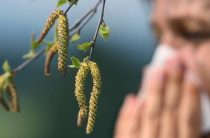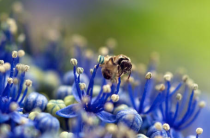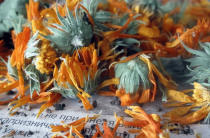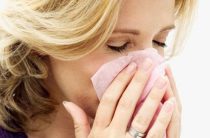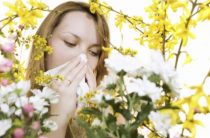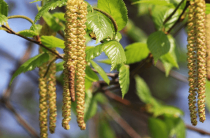Allergies are spreading across the planet at cruising speed. In particular, it affects modern residents of megacities, who have been exposed to adverse environmental factors since childhood. Among the inhabitants of rural regions, the statistics are generally better, but still leave much to be desired.
The fact that a couple of centuries ago in central Russia and Belarus would have sounded outright savagery, today, unfortunately, is becoming the norm. We are talking about such a variety of allergies as allergy to birch color . In general, any person who has a predisposition to this disease is susceptible to this phenomenon. But the inhabitants of Russia and Belarus, where, due to the peculiarities of the flora, birch represents a significant part of woody plants, suffer from this disease more than others.
And so, allergy to birch pollen is a kind of allergy to flowering plants. It is a seasonal disease and lasts from the beginning of April until the end of this month. Actually, during this period, the patient continues to experience the symptoms of this disease, which may continue for some more time, after the pollen ceases to spread through the air.
Nature of birch pollen allergy
And so, all the same, how and why does an allergy to birch color occur? The fact is that the peculiarity of the botanical structure of male flowers is such that they contain protein structures. Well, in our body there are special immunity proteins called immunoglobulins. These immunoglobulins have very useful properties, they are able to attach to the proteins of potentially harmful agents and provoke an immune system response to their presence. The essence of this mechanism is simple, it consists in notifying that there is a foreign agent in the body, its destruction and excretion.
And so, the question arises: “Is the pollen of male birch inflorescences harmful to the human body, along with parasites?”. That's the snag of allergies, that the reaction of immunoglobulins occurs on substances that are safe for the human body.
Symptoms of Birch Pollen Allergy
And so, for an allergy to birch flowering, respiratory symptoms are mainly characteristic. This complex of symptoms consists of: nasal congestion caused by allergies, increased secretion of a clear liquid from the nasal cavity, sneezing, redness around the eyes, and allergic cough. Basically, these are the main manifestations of any allergy, in which the allergen penetrates through the respiratory tract.
However, although with a lesser prevalence, a variant of the development of typical allergy symptoms is possible:
- Skin manifestations. The patient notes changes in the skin, which are characterized by the formation of blisters, redness, peeling, constant itching.
- Often these manifestations are aggravated during times of stress.
- Symptoms similar to the initial stage of ARVI, which is characterized by general weakness, aching joints, fever. It is also a very common symptom, along with respiratory.
- Asthmatic manifestations, which are expressed in bronchospasm, difficulty breathing, specific cough.
- Anaphylactic shock.
- Quincke's edema.
Allergy to birch pollen. Drugs and medicines
Birch pollen allergy has the same immune response mechanism as other types of allergy, so there is quite a lot of room for common therapeutic practice. As with any other type of allergy, apply:
H1 receptor blockers
The action of these drugs is based on the fact that they interrupt the chain of biological action of histamine, without which not a single allergic reaction of the body can do. Their mechanism of action lies in the following chain of reactions: instead of histamine, they adjust to its H1 receptors, which, being on the surface of various tissues, give signals to cells to start allergic reactions. These drugs are among the most researched, due to the increased need.
To date, there are many drugs that block H1 receptors, from the first - the least effective with the most severe side effects, to the most modern, which are long-acting and show almost no side effects.
In general, all agents for suppressing H1 histamine receptors can be divided into:
- First generation drugs. These are the first antihistamines to be used to treat allergies. They have a rather large list of side effects: inhibition of the nervous system (lethargy, drowsiness, constant fatigue), overdrying of the mucous membranes of the mouth and nose, tachycardia;
- Second generation drugs. Basically, they either do not have a sedative effect on the body, or have significantly less inhibitory effects on the nervous system. For most patients, they are easily tolerated during the daytime.
- third generation drugs. They have the fewest side effects. However, they do have one drawback. These substances are metabolized by the kidneys, which forces doctors to be careful when prescribing these drugs to the elderly and people with disorders of this organ.
It should be noted that due to poor tolerance and a high frequency of extensive side effects, first-generation antihistamines (tramadol, diazolin) are not used in modern practice in the treatment of allergies. They are giving way to more and more modern drugs, which in themselves do not have such strong side effects, are easier to tolerate by patients and develop a therapeutic effect at lower dosages.
Corticosteroids. Allergy medications
Corticosteroid drugs have the following effects:
- Able to stabilize cell membranes, which in this form do not release substances that provoke allergic reactions;
- Reduce the capillary capacity, which allows you to relieve swelling. In particular, they eliminate nasal congestion with an allergy to flowering, which is caused by the expansion of the capillaries of the nasal sinuses;
- Prevent the development of cellular mechanisms that cause the formation of allergic reactions on the skin
Injectable drugs have a powerful effect on the removal of allergic manifestations. They are mandatory for use, subject to the development of such severe manifestations as anaphylaxis, Quincke's edema, severe attacks of bronchial asthma. These drugs are often used to relieve acute manifestations of allergies. Their use, in order to avoid side effects, continues with allergies for no more than a week. During severe allergic reactions, they are used along with adrenaline and other rescue drugs at dosages many times higher than those usually used.
During attacks of bronchial asthma, which are quite common symptoms of birch allergy, it makes sense to use corticosteroids in the form of inhalations carried out by special devices - inhalers. This form of application can significantly reduce the number and intensity of side effects, since the further distribution of corticosteroids throughout the body through inhalation is much lower.
Corticosteroid ointments
Although skin manifestations in birch pollen allergy are less common than respiratory ones. However, this is a fairly common occurrence. If we are not talking about generalized urticaria, when skin manifestations cover almost the entire body of the patient, then it is advisable to use corticosteroid ointments instead of systemic injections. This is due to the fact that with this form, corticosteroids penetrate the body much worse, in addition to the tissues of the skin on which they are designed to act. This, as in the case of the inhaled form, contributes to a significantly lower spread and intensity of side effects.
Anti-asthma drugs
Often, with an allergy to birch pollen, as with other respiratory forms of allergy, asthmatic manifestations occur. For these symptoms, standard asthma medications are used. Naturally, attention is drawn to drug interactions that may occur with other drugs that are used as part of complex therapeutic measures.
Prevention of allergy to birch flowering
No matter how effective modern drugs are in the treatment of this disease, the effect will be much better if you follow the rules of prevention. And so, they are the standard measures against allergies to plant pollen:
Try, if possible, to distance yourself from birch pollen. It is advisable, of course, in April, at the time of its flowering (approximately a calendar month), to move to places where this plant does not grow. But do not despair, even if you cannot leave, it will be enough for you to follow simple rules for the time of its flowering to significantly reduce contact with the allergen, and therefore significantly reduce its negative impact.
It is necessary to carry out wet cleaning of the premises as often as possible; install barrier nets on windows with a minimum cross-sectional diameter; refrain from walking during the day, in dry and windy weather. These simple measures will allow you to significantly reduce the frequency of contact with an allergic substrate.
Refrain from drinking alcohol and smoking. These substances have a negative impact not only on health in general, but also in particular on the course of any allergic disease. Allergy to birch color, in this case, is no exception.
Follow a hypoallergenic diet that your allergist will guide you through. During the flowering period of birch pollen, it is better to refrain from eating foods that provoke allergic reactions. Even if you are not allergic to these products, the substances contained in them can affect the work of the immune system that is sensitive during contact with the allergen and aggravate the course of the disease.
Engage in physical education. Moderate physical activity has a beneficial effect on the functioning of the immune system, which in a person suffering from allergies does not work properly. Regarding the nature of the load, it would be best to consult a general practitioner, based on your well-being.
Consume vitamins and minerals. In sufficient quantities, these micronutrients heal the body as a whole and the immune system in particular.
Avoid stress.
Stress is a significant depressing factor for the normal functioning of the immune system. It is not uncommon for allergies to develop just against the background of stress. Well, if the patient already suffers from allergies, then stressful effects only exacerbate the course of the disease. Moreover, we are talking about both physical and mental stress, as well as stress caused by excessive intellectual stress. Caution for breastfeeding mothers:
Remember that breast milk is one of the first conditions that is necessary for your baby to be healthy and strong. Children who are deprived of breastfeeding are much more likely to suffer from allergic diseases than their peers. The fact is that breast milk contains special substances that form the normal development of immunity. Do not think that modern dry formulas can replace full breastfeeding.
During breastfeeding, follow a special diet that your gynecologist will prescribe for you. Breast milk is very sensitive to ingested substances and is able to absorb them. So be careful with your diet!
We warn that the information in this article should be treated primarily as reference materials. In no case do not engage in self-diagnosis and self-treatment!


